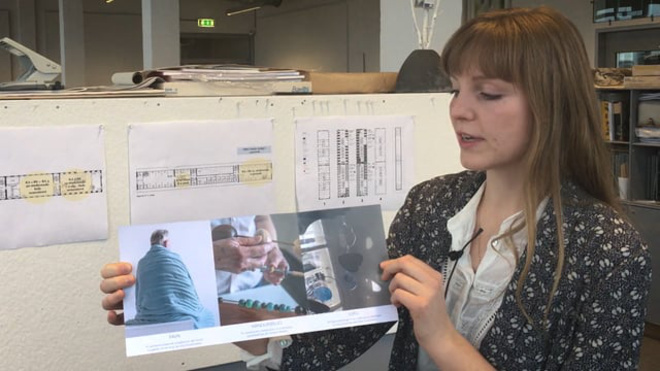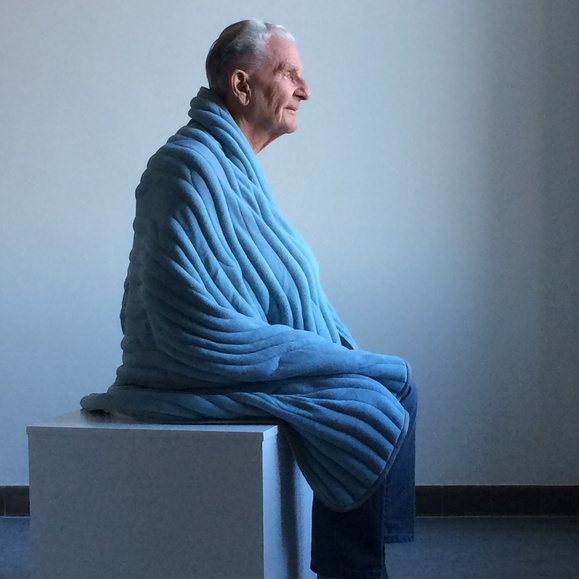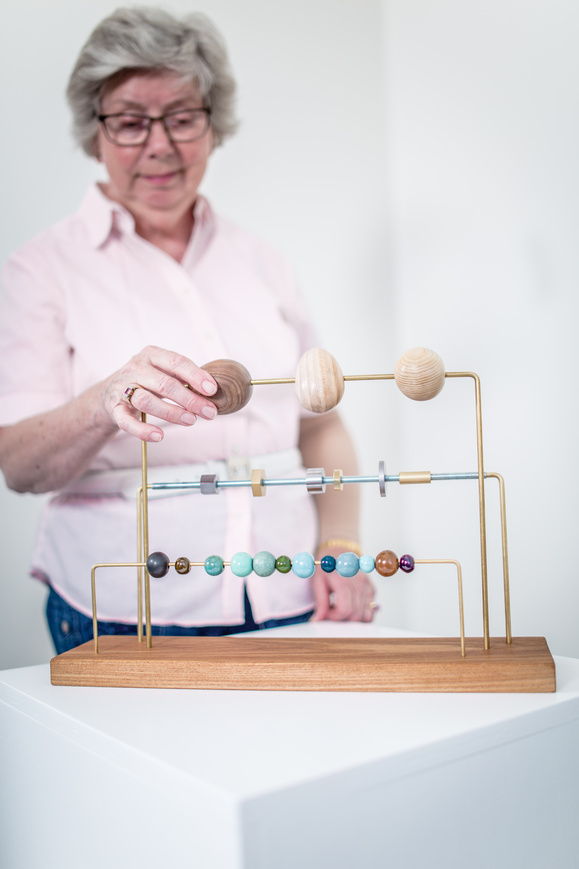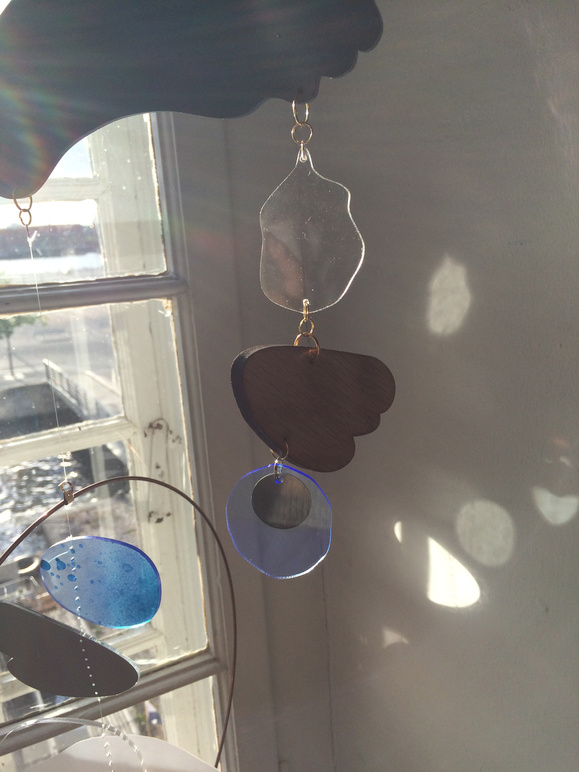A design graduate, Emilie Wiehe became aware of the problem of dementia, when her own maternal grandfather was affected by the disease. The other day she presented her ideas for solutions to improve the quality of life for people with dementia to Thyra Frank, Minister for the Elderly. The Minister is in no doubt that welfare design projects like Emilie’s will play an increasingly major role in the care of dementia sufferers.
“I have seen weighted blankets for dementia patients before, but never as beautiful as this one,” said Thyra Frank, Minister for the Elderly, yesterday, when she was shown three specially designed products for dementia patients, created by a KADK graduate. Emilie Wiehe has designed: a sensory-stimulating weighted blanket, which embraces the body and provides a sense of security; an activity sculpture, which can activate restless hands; and a mobile, which can capture fleeting moments and create momentary calm. The Minister is in no doubt that welfare design projects like Emilie’s will play an increasingly major role when it comes to dementia patients. “It is the intellectual capacities of dementia sufferers that are first affected, so all that remains to them is their senses. So, as far as I can see, there is no doubt that architecture and design, which can speak to the senses, will play an increasingly important role in our provisions for dementia sufferers. I think it’s exciting that KADK students are addressing this issue. This is the road we must also take. There will be a continuous need for innovation, so we can improve our efforts on behalf of citizens with dementia,” says Thyra Frank.
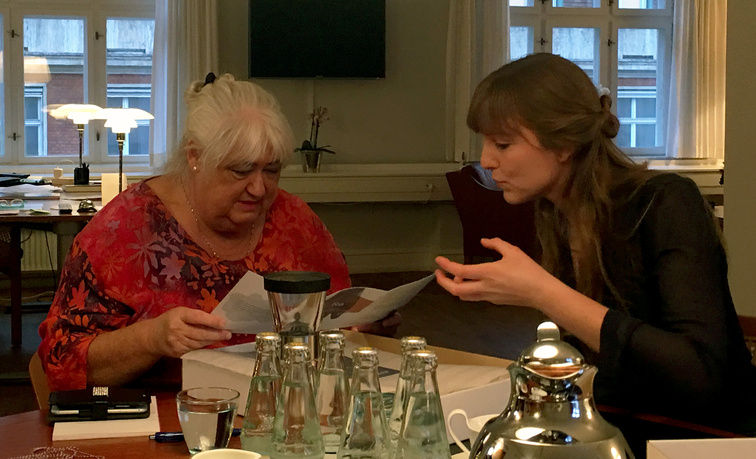
DKK 0.5 billion for dementia sufferers
One of her first tasks as Minister for the Elderly will be to implement the Government’s recently launched dementia action plan. Just under DKK 0.5 billion have been earmarked for the effort. The money will be used to make Denmark more dementia-friendly, developing and improving housing and the physical environment for people with dementia. “Dementia is a disease, but there is still a human being behind the disease, and we can improve that person’s quality of life and well-being, helping them to blossom by creating stimulating, sensuous environments,” says Thyra Frank. For the design graduate, Emilie Wiehe, “that person” was her maternal grandfather. It was his dementia that awakened her interest in the field, encouraging her to explore how design can improve the well being and everyday life of people with dementia.
“Of course, I read the latest literature and research in the field. But what made the biggest impression on me were my visits to a care centre, where interviews and observations taught me that small measures can actually make a huge difference. We don’t need a lot of show and day trips. What we need are quiet activities that speak to the senses in the here and now. That is where people with dementia are, and that is where we can help them. I have attempted to accommodate that need with my design,” says Emilie Wiehe.
KADK’s architects and designers create innovative, practical solutions
The Rector, Lene Dammand Lund describes how this is a typical approach for students at KADK. Many of them identify a problem in society, investigate it and then create totally practical solutions and products, which can tackle an issue in a new way.
“These are products and models that can tackle problems on the local level. But this approach, which is rooted in the strong Danish tradition of welfare design and architecture, has great potential as an export item. Like many of today’s other major challenges, dementia is not just a Danish problem. So there is every reason to believe that there is a demand for the innovative welfare designs and solutions, which our young, incredibly socially aware designers and architects create,” says Lene Dammand Lund.


